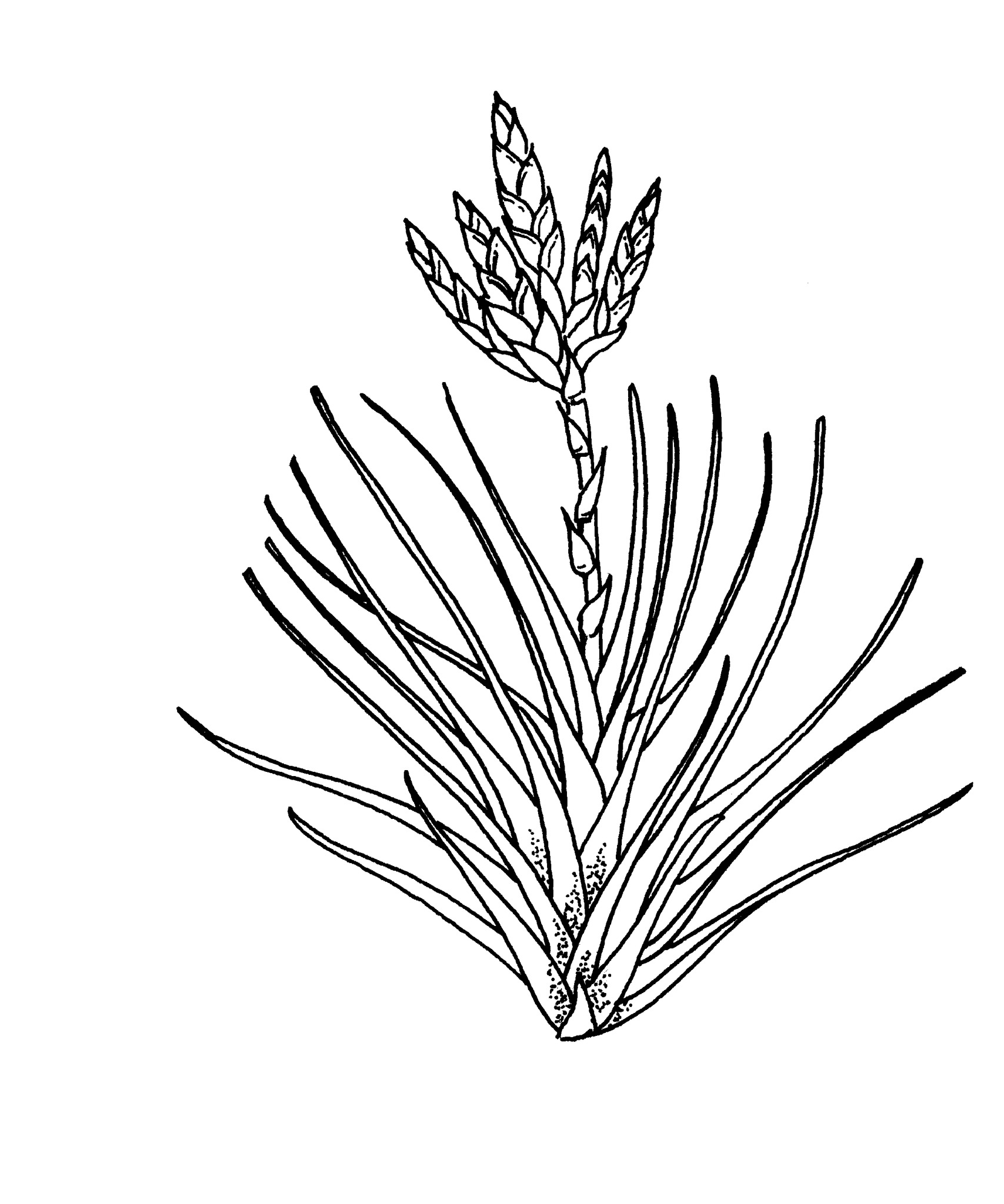
Plant variable in habit and size. Leaves many in a rosette, 30-70 cm long; sheaths ovate, very dark brown toward base, brown scaled; blades narrowly triangular, 2-3 cm wide, almost always involute-subulate toward the tip, finely scaled. Scape erect with leaf-like bracts at base, upper ones broadly ovate, red, or green tinged with red, scaled. Inflorescence simple or digitate; spikes erect to spreading, 6-26 flowered, to 30 cm long, 4 cm wide, more or less flattened; floral bracts overlapping, 2-5 cm long, usually exceeding the sepals, hairless, or scaled only at the tip; sepals lanceolate, keeled; petals to 6 cm long, purple, forming a tube; stamens protruding.
Florida, Mexico, Central America, West Indies and northern South America.
There are many forms of this species in cultivation.
T. concolor L.B. Sm. from Mexico and El Salvador has many leaves in a dense funnel-like rosette, 20-30 cm long, 1.7 cm wide, narrowly triangular, grey scaled, thick, fleshy; sheaths indistinct. Scape very short with leaf-like bracts. Inflorescence simple or digitate; spikes 2-4, linear-lanceolate, 9-13 cm long, 2-3 cm wide, strongly flattened, many-flowered; floral bracts ovate, 3.5-4 cm long, exceeding the sepals, hairless, red and yellow; sepals ridged; petals 6 cm long, violet, forming a tube; stamens protruding.
Source: (2005). Bromeliaceae. In: . Horticultural Flora of South-eastern Australia. Volume 5. Flowering plants. Monocotyledons. The identification of garden and cultivated plants. University of New South Wales Press.
